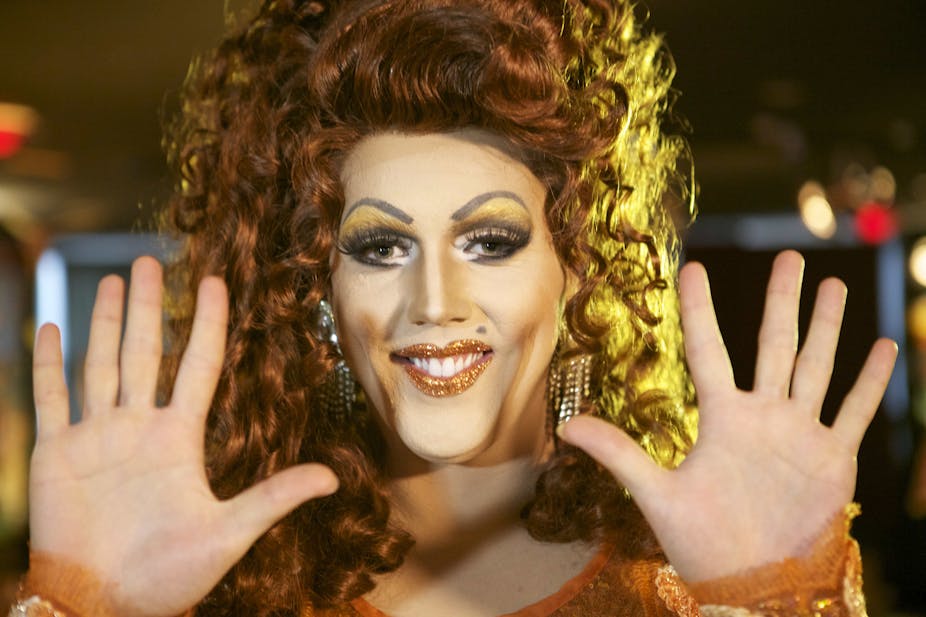For thousands of years, people believed their future could be read in the lines etched into the palm of their hands. The ancient art of palmistry, originating in India, claimed a close examination of the hand could not only reveal what kind of person you were, but also other information such as when you might die.
Like many other cosmological beliefs, it’s tempting to ask whether there might not be a kernel of truth to palmistry; that somehow the ancients intuited the workings of nature revealed today by the natural sciences.
This is certainly a temptation SBS documentary The Secrets of the Hand (part of its four-week Tales of the Unexpected season) has succumbed to. In a series of experiments, the program tests the notion that the hand might “speak to us” about our personalities, illnesses and even longevity.
Charles Bell and the hand of God
Since the 18th century movement in Europe known as the Enlightenment, the hand has been incredibly important for scientists. Take, for example, the celebrated surgeon and physiologist Sir Charles Bell (1772-1842).

Bell was not a scientific nobody. His experiments on the nerves opened the way for the modern understanding of the nervous system. He even has a facial palsy named after him.
For Bell, the hand was a particularly special part of the body. So much so that, in 1833, he made it the subject of a Bridgewater Treatise, a series of books written by some of the most eminent British scientists of the day, all of whom aimed to demonstrate that nature proved the existence of god.
In an exhaustive tome of more than 400 pages, Bell minutely described the anatomy of the hand, pointing out its incredible complexity, which could only have arisen if there was a designing god.
Bell’s beliefs were mocked by The Lancet, which cruelly aped his Scottish accent, saying that Bell:
never touches a phalanx and its flexor tendon, without exclaiming, with uplifted ye, and most reverentially-contracted mouth, ‘Gintilmin, behold the winderful eevidence of desin!’
Despite The Lancet’s disdain and the contemporary temptation to see Bell’s ideas as a direct antecedent to those of the intelligent design movement, his beliefs were mainstream for orthodox British scientists of the day.
Indeed, people like Bell did an incredible amount towards establishing the homology of the hand with the flippers of whales and the wings of birds. But Charles Darwin’s theories about evolution would soon purge such views from mainstream science.
Fingerprints… and medical palmistry?
Now the hand illustrated the complexities of evolution through natural selection. Equally significant, the minute grooves and ridges – the arches, whorls and lines – were a sign of the uniqueness of each person.

It was this that led Darwin’s cousin, Francis Galton (1822-1911) to develop fingerprinting, which very soon became a major tool of forensic science.
Galton wasn’t the first to recognise the potential of fingerprinting as a method of identification. That honour goes to William James Herschel, a functionary of the East India Company, who used palm and fingerprinting for preventing imposture.
Still, Galton was the man who classified the different patterns, allowing fingerprints to be used for the systematic identification of individuals.
But these weren’t science’s only encounters with the hand.
Clinical medicine, which emerged from the Paris hospitals of the late 18th and early 19th century, was always on the lookout for new ways of diagnosing illness from physical signs. Close study of the features of the hand might disclose the existence of incipient medical problems.
And so, the early years of the 20th century saw the emergence of dermatoglyphics: the attempt to correlate the different features of the hand with specific medical conditions.
This outcrop of clinical medicine was only successful up to a point. A variety of illnesses, both mental and physical, can be detected from the various shapes, distortions and patterns of the hand, including a variety of vascular conditions and a few genetic disorders.
But, like many of the older methods of clinical medicine, the diagnostic potential of dermatoglyphics has now been exponentially surpassed by genetics.
The attraction of mystery
Nonetheless, those older ways of knowing the world, fostered in ancient worlds, refused to die. Along with other forms of divining, such as astrology, palmistry remained incredibly popular.

The Enlightenment, with its emphasis on rationalism over superstition, failed to sound palm-reading’s death knell.
In sideshow tents and seaside shops, mystics continue to thrive, peddling their wares to the many who believe that “there is more in heaven and earth than is dreamt of” in science’s philosophy.
Like astrology or homeopathy, palmistry today stands as a critique of scientific reductionism; a way of saying there’s a metaphysical world beyond discoverable matter.
So how well does this older way of knowing stand up to the scrutiny of the documentary makers and their attempt to construct experiments that test palmistry’s plausibility?
To answer that question you’ll have to watch on SBS on Sunday April 13 at 8:30pm, suffice to say that you’ll see one rather astounding result.

